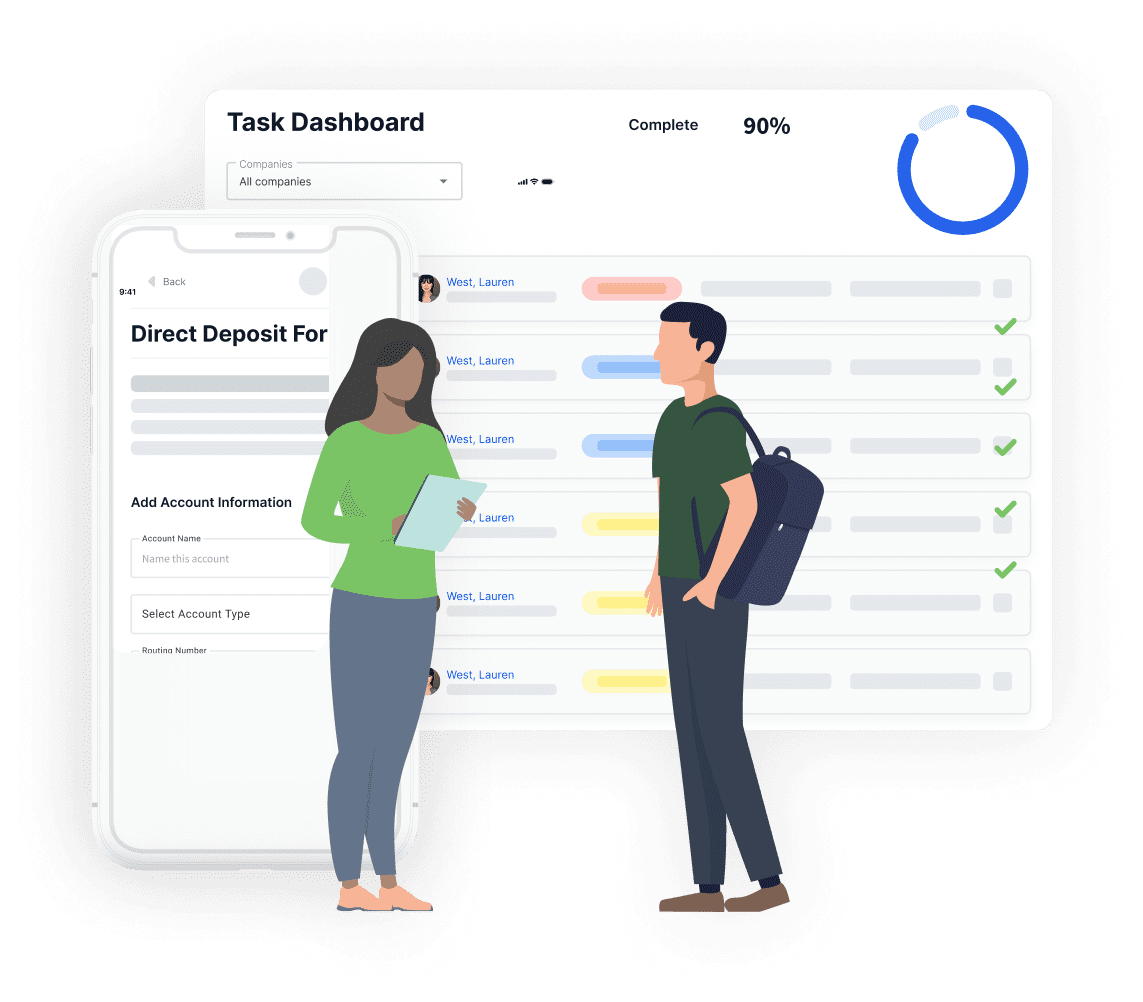
 Onboarding
Onboarding
From Offer to On-the-Clock—Same Day
Set new hires up for success from day one with a welcoming and organized experience.
Netchex Onboarding helps you welcome new hires with speed, clarity, and confidence. Our fully digital process keeps things simple, efficient, and compliant.

7,500+ organizations trust Netchex
Everything You Need for a Smooth,
Stress-Free Start
Welcome new hires with a fast, friendly first-day experience.
Paperless Onboarding That’s Ready When They Are
No binders. No printers. No last-minute scrambles.
From signing documents to entering personal details, new hires can complete every task online—wherever they are. Netchex simplifies the entire process with texts and emails, so your team can hit the ground running on day one, right from their mobile devices.
Keep HR in Control (Without the Chasing)
Onboarding new hires is a breeze when you have the right HR tools. With automated reminders, checklists, and real-time progress tracking, HR and managers always know where each new hire stands. No email follow-ups or sticky notes required.
Onboarding should feel personal and exciting—not like busywork.
Give every new hire a confident start with welcome dashboards, team intros, and easy access to resources. Netchex helps you introduce company culture, assign tasks, and share everything they need in a way that feels personal and polished, creating a warm welcome and a strong start.
Rehire with a Single Click
Seasonal and returning employees? We’ve got you.
Netchex remembers previous hires, so you can skip the re-entry admin. Automatically carry over relevant information from year to year and reduce onboarding time to minutes.
Explore Netchex Products
Netchex Payroll Hourly or salaried, pay them right—right on time.
Netchex HR – Save loads of time with one seamless platform.
Netchex Learning – Stay compliant, automate training, and build skills.
Works with the tools you already use
DealerTrack & Netchex
Streamlines dealer operations to drive profit potential and improve efficiency.
Daxko Club Automation
Club Automation empowers fitness centers and health clubs to run smarter, more efficient operations.
Transamerica & Netchex
Transamerica is a financial services company offering a variety of retirement and insurance services, as well as annuities and investment management.

Hireology & Netchex
Hireology is a hiring and HR platform that empowers decentralized businesses to attract and retain talent.
Vestwell & Netchex
Access a modern platform and full-service solution to streamline your company’s retirement plan.
QuickBooks & Netchex
Easily connect their QuickBooks Online (QBO) account directly to Netchex payroll
Intuit & Netchex
Tax preparation services for seamless delivery of W-2 information and a streamlined the tax-filing process.
H&R Block & Netchex
Seamless delivery of W-2 information and a streamlined the tax-filing process.
Netchex Customer Testimonials
Payroll Specialist

“I love the integrated platform. With our old payroll company you would have to make the same change in several different areas of the software. With Netchex, it only takes once. This system is so user-friendly, it makes training a breeze. And the customer service is second to none!”
Payroll Administrator

Netchex has been fantastic. We enjoy personalized service, we know the people that we deal with, and they bend over backward to get what we need done.
HR Director

Netchex is wonderful. Everyone has been continuously impressed by the services they provide. Back when the new ACA regulations went into place, and even now with the whole COVID-19 situation, Netchex just continues to knock it out of the park
Onboarding Software FAQ
Yes! New hires can complete all onboarding tasks from any device, anywhere, even before their first day. Netchex makes remote and in-person onboarding equally smooth.
Turn New Hires Into Day-One Rockstars
Faster starts. Smoother transitions. Happier teams. Let Netchex make onboarding the easiest part of growing your workforce.